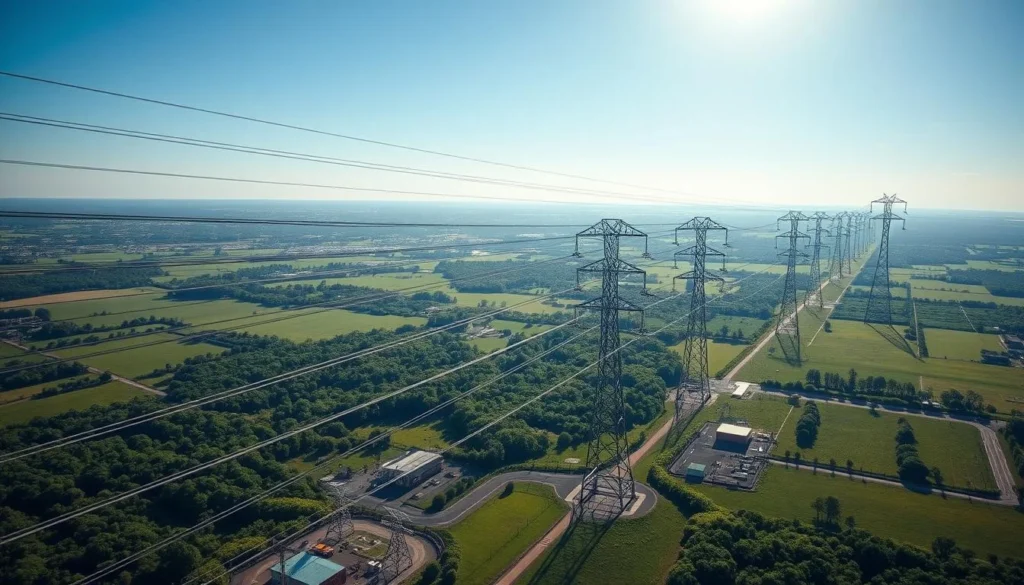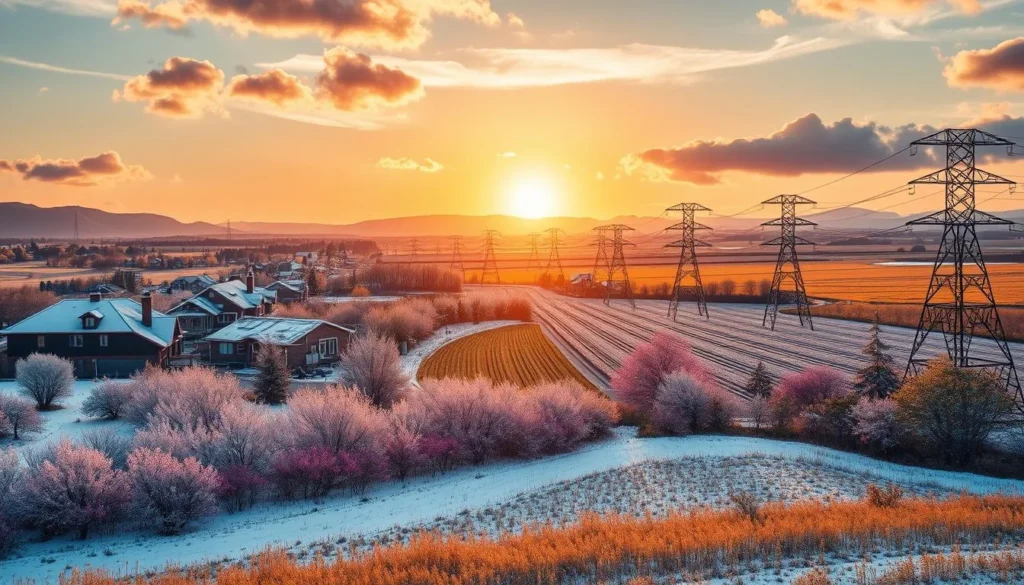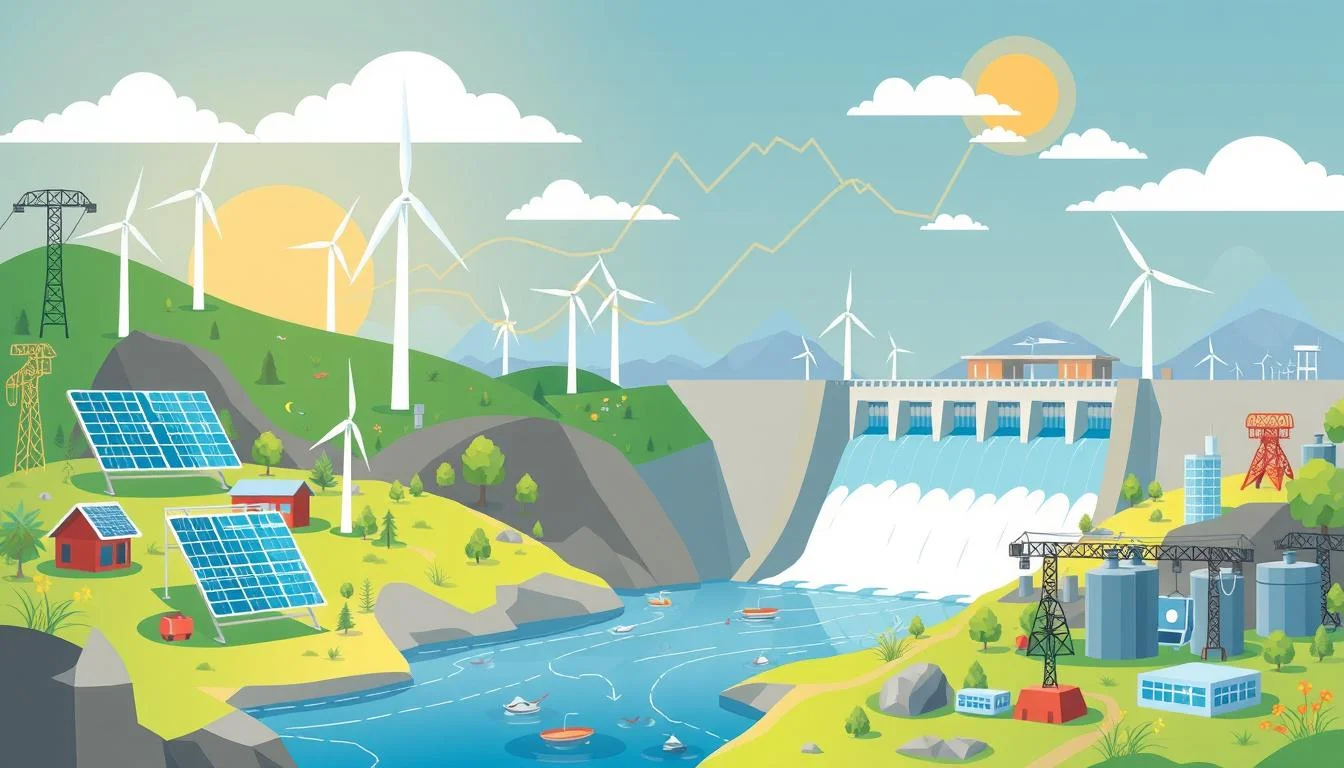Electricity is a vital element of modern life, powering everything from our homes and economy to everyday tasks like washing our clothes. However, fluctuating electricity prices may leave consumers baffled as to their causes – from fuel costs to regulations; several factors affect its price and therefore have an effect on both businesses and households alike.
Here we explore these most influential elements affecting electricity costs while offering tips for effectively managing them.

Key Takeaways
- Prices for electricity can be affected by a myriad of variables, such as generation costs transmission and distribution costs, cost of fuel, and government policies.
- Understanding electricity prices can help both businesses and individuals in making better decisions in regards to energy use and conservation.
- Variations in the demand for electricity during the season and the competition in the energy market have a major impact on shaping the price of electricity.
- New trends such as green energy are likely to have a high impact on the future cost of electricity.
- Consumers can make sure to control electricity bills by focusing on usage, improving energy efficiency and staying up to date about the elements that leads the cost of electricity.
Understanding Electricity Prices
Electricity Pricing can be more complex than initially appears. Numerous factors come together to influence its cost, including its production, transmission and use. Each stage of the process is a cost that will eventually affect consumer bills.
The Complexity of Electricity Pricing
Prices for electricity aren’t set; they are affected by a variety of variables which interact in complex ways. The price of electricity production, the price of fuel or government regulations Each of these factors contributes to the final cost that we have to pay for electric. In addition the infrastructure that provides electricity as well as the demands of consumers also affect the price fluctuation.
The Impact on Households and Businesses
The cost of electricity is a major issue for both private individuals and companies. For families, fluctuation in the cost of electricity could make budgeting difficult. For businesses, particularly those with a high consumption of energy price increases directly impact the margins of profit. If you understand the reasons that drive these changes, customers are able to make better choices about the efficiency of their consumption and energy and ultimately save on electric bills.
| Electricity Pricing Factors | Impact on Households | Impact on Businesses |
|---|---|---|
| Generation Costs | The cost of energy for households has increased. | More expensive operational costs |
| Transmission and Distribution Charges | Variations in monthly electric bills | Unpredictable energy budgeting |
| Fuel Costs | Energy bills can be volatile, particularly during peak demand times | Problems with cost forecasting and pricing strategies |
| Regulatory and Policy Influences | Budgets for household energy are changing because of policy changes | Modifications to business processes and pricing models |
Electricity Prices: Generation Costs
The main factor that influences the electricity price are the generation costs, which are cost of producing electricity. The expense of operating an energy plant is a significant portion of what the consumers are paying for electric power. This is not just fuel expenses but also operational and maintenance costs.
Fuel Costs and Power Generation
The cost of fuel, whether natural gas, coal or uranium for nuclear power have a significant impact on the price of electricity. When global fuel prices rise, so do electricity bills. For example when natural gas becomes more expensive because of shortages of supply, these increased costs are passed to the consumers. However when renewable energy sources such as solar and wind are more common and cost-effective, their lower operational expenses can benefit lower electricity costs over the long run.
Plant Maintenance and Upgrades
Making sure that power plants run efficiently is another major expense. Older power plants, specifically require more care, whereas newer, more eco-friendly technology comes with high upfront cost. These costs are inevitably reflected in electricity prices. Additionally, the development of new power plants to cater for rising demand will increase the total price of the production of electricity.
The construction of new power plants using traditional or modern energy sources can also impact costs. The initial investment and ongoing expenses o are included in electricity costs.
“The price of electricity is an important factor that determines the end cost for consumers. it’s a complicated combination of many aspects that could significantly affect budgets for both business and household.”

It’s crucial to know the way the cost of electricity production impact the price we pay. This knowledge helps us make better decisions about the use of energy. This also allows us to control our spending better in an ever-changing energy prices the world.
Transmission and Distribution Charges
When electricity is generated it will transferred to homes and businesses. The setup that makes this possible is transmission lines, transformers, and substations and also needs ongoing maintenance and upgrades to remain efficient.
Grid Infrastructure and Costs
Maintaining a functioning electrical grid is crucial to warrant the reliability of energy supply and minimize power loss when it comes to transmission. In places such as Pakistan the consumers rely upon IESCO (Islamabad Electric Supply Company) for their electricity, these distribution and transmission costs are included in their electricity billing. Consumers can review on their IESCO invoice or go to IESCO bills online and check with reference numbers to check the details of the charges.
The expense of re-building the grid to accommodate the growing consumption or rise efficiency may rise prices of electricity in the short run. But in the long time the more efficient grid may benefit maintain prices or decrease the cost of electricity.
| Charge | Description | Impact on Electricity Prices |
|---|---|---|
| Transmission Charge | The cost covers the cost of transportation of electricity from power generation facilities to local distribution networks. | Costs for transmission can rise the overall cost of electricity. |
| Distribution Charge | It covers the cost of providing electric power through the local distribution network to homes and businesses. | Costs for distribution that are higher can contribute to a rise in electricity prices for consumers. |
Understanding the distribution and transmission charges can benefit us understand the factors that affect electricity prices. This information helps us make better choices on how we consume energy.

Fuel Costs: A Major Factor in Electricity Pricing
A key element in the price of electricity generation is fuel costs; regardless if they come from fossil fuels or renewable sources of energy production. Their prices have an effectful bearing on manufacturing prices for electricity generation.
Stability of Renewable Energy
Renewable energy sources have become more cost-competitive with fossil fuels due to lower operational costs, making renewables an appealing energy solution for many consumers. Their growing market share could help bring electricity prices under control; those performing regular IESCO online bill check or reviewing duplicate bills might see gradual changes to cost structures as more renewables enter the grid.
| Fuel Source | Advantages | Disadvantages |
|---|---|---|
| Fossil Fuels | Establish infrastructure consistent and reliable power generation | Volatile fuel costs Environmental impact |
| Renewable Energy | Reduced fuel costs and environmentally green | More initial investment, more frequent intermittency and storage problems |
The energy world is changing so we need to a create balance between fossil fuels and renewable energy. This balance will affect electricity fuel costs and how affordable electricity is. Everyone needs to work together to find a good mix for reliable, affordable, and green electricity.

Regulatory and Policy Influences on Electricity Prices
Policies and regulations of government are crucial in determining the price of electricity. Regulatory body such as NEPRA (National Electric Power Regulation Authority) in Pakistan create rules and guidelines for determining price for consumers to pay for electricity.
Carbon Pricing & Subsidies
Policies such as carbon pricing which make fossil fuels less expensive could improve the cost of electricity. However incentives for energy sources that are renewable could reduce these price increases, and encourage the use of more sustainable energy sources. Knowing these policies, like the NEPRA’s Tariff regulations will benefit consumers to anticipate changes in their electric bills.
Energy Efficiency Standards
Governments frequently impose energy efficiency requirements on buildings and appliances. This could reduce the consumption of electricity over a period of. Although the initial cost of using energy-efficient appliances might rise the cost of electricity for a short time however the long-term impact will usually be a decrease in demand, and more price stability.
Electricity Prices: Seasonal Fluctuations
Electricity demand fluctuates throughout year, causing fluctuations in the prices of electricity during the season. These fluctuations are driven by temperature fluctuations that impact the need to heat and cool.
Understanding Peak Demand Periods
In extreme weather conditions such as warm summers or cold winters, electric demand increases, which causes prices to increase. This is apparent when you check you IESCO account online during summer, when the use of air conditioning is at its the highest. In peak demand times power companies might have to utilize more expensive and less efficient energy sources, which can increase the total cost of electricity.
Balancing Supply and Demand
When there is less demand, like the fall and spring the prices for electricity tend to decline. If they are aware of the fluctuations of seasons consumers can understand their usage of energy and reduce their bill by with options such as bill correction for customers as well as billing corrector services.
| Season | Electricity Prices | Factors Influencing Prices |
|---|---|---|
| Summer | Higher | The use of air conditioning has increased |
| Winter | Higher | Demand for heating is increasing |
| Spring/Fall | Lower | Moderate consumption of energy |
Being aware of price fluctuations can help us save energy. In this way, we conserve money together energy when it’s less expensive. It’s a smart choice for both businesses and homes to correct customer bills.

The Role of Competition and Market Forces
In the electricity market that is competitive market forces like demand and supply, the price of fuel and technological advances play a major impact on the electricity prices.
Competition Among Providers
In regions that have many electric providers, customers can benefit from competition. They can compare prices, use their IESCO bill-check options, as well as select suppliers that provide their customers the excellent rates. Markets that are competitive benefit to lower electricity prices and gives consumers greater in control of their electricity expenses.
| Metric | IESCO Region | National Average |
|---|---|---|
| Electricity Market Competition (Number of Providers) | 7 | 9 |
| Renewable Energy Penetration | 15% | 20% |
| Average Residential Electricity Price | $0.12/kWh | $0.13/kWh |
These IESCO electronic bill as well as IESCO duplicate billing services benefit customers make educated choices. They permit price comparisons as well as switching providers. This allows you to manage your electricity bills more efficiently.
As the market changes and competition increases, the development of new energy sources and consumer services will affect the price of electricity. They warrant the fairness and efficiency of the energy market for everyone.
The Impact of New Energy Sources
The growing accessibility in renewable sources of energy such as wind and solar power brings new players to the electric market, bringing prices down due to competition. For instance, customers who make use of IESCO online bill checking services can observe the impact of renewables on their electricity costs.
Electricity Prices and Energy Efficiency
As prices for electricity rise increasing energy efficiency becomes an essential strategy for business and homeowners to cut expenses.
Energy-Saving Technologies
The cost of electricity keeps rising and energy efficiency is a must for businesses and homes. Through together techniques and technologies that save energy we can cut back on the use of energy. This reduces the price of electricity.
Moving to energy-efficient appliances and LED lighting is a wise choice. They require less power and will save you costs over the long run. Additionally, making houses and buildings more energy efficient and weatherproofed can reduce heating and cooling requirements. This results in together less energy.
- Upgrades to energy-efficient appliances and LED lighting
- Improvement of insulation and weatherproofing buildings
- Implementing energy-saving strategies like switching off electronics and lights when they are not being used
Businesses are also able to rise the efficiency of their electricity. They can make use of intelligent energy management systems (SES), intelligent controls and also renewable energy sources. These actions reduce costs and demonstrate that their concern for the environment.
| Energy Efficiency Measure | Potential Cost Savings |
|---|---|
| Upgrade to energy-efficient appliances | A 30 percent savings on electricity bills |
| Improved insulation of buildings | Up to 20% savings in cooling and heating expenses |
| Smart energy management systems for smart energy management | Up to 15% decrease in the total energy consumption |
If we focus on energy efficiency, we are able to reduce electricity costs along with energy performance more effectively. This can benefit save money as well as safeguards the environment. When electricity prices unstable in the future so energy efficiency is an efficient method to lower costs and will so lead to minimize pollution to the environment.
“Energy efficiency isn’t only about saving money, it’s about assuming the responsibility for our use of energy and helping to create a more sustainable future.”
Conclusion | Trends and Future Outlook
The energy industry is changing quickly. The latest technologies and evolving market trends are determining how we will see the next generation of the electricity price. The rise of smart grids, renewable electricity and energy storage are likely to impact the price of electricity significantly.
Renewable energy sources like wind and solar is increasing in importance. With the cost of these energy sources decreasing and they’re competing with fossil fuels. This will result in the cost of electricity more affordable and stable to everyone. Advanced meters and smart grids benefit in making energy use more efficient. They allow users to view your ESCO statement as well as their IESCO bills online.
Storage for energy, such as batteries are growing in popularity. They benefit to solve the issue of renewable energy being unstable. Through storing energy and then releasing it as needed they help maintain the cost of electricity constant. These improvements will provide greener and more affordable energy for businesses and homes.
FAQs
What are main factors that affect electricity prices?
Electricity prices are affected due to many factors such as generation costs, fuel prices, transmission and distribution charges and government regulations.
How renewable energy affect electricity prices?
Renewable energy such as wind and solar, due to there lower operational costs and less volatile than fossil fuels, potentially stabilizing or reducing electricity prices over time.
Why do electricity prices fluctuate seasonally?
Electricity prices rise in the periods of high demand such as summer and so in winter when more energy is consume for heating and cooling.
How can I reduce electricity bill?
You can lower electricity bill by improving energy efficiency, using energy efficient appliances and also take advantages of smart energy management systems.
How can I get a customer bill correction for my IESCO bill?
If you spot an error in your IESCO bill, ask for a correction. Call IESCO’s customer service or use their online portal. Share the details of the issue, and they’ll correct it for you.


Great breakdown of the factors influencing electricity prices! It’s interesting to see how everything from fuel costs to seasonal demand impacts our bills. Renewable energy seems like a promising solution for stabilizing prices long-term, especially with its lower operational costs. The insights on energy efficiency are particularly helpful for both homeowners and businesses. By making smarter energy choices, we can all save on electricity bills while contributing to a greener future. Thanks for shedding light on these important issues!